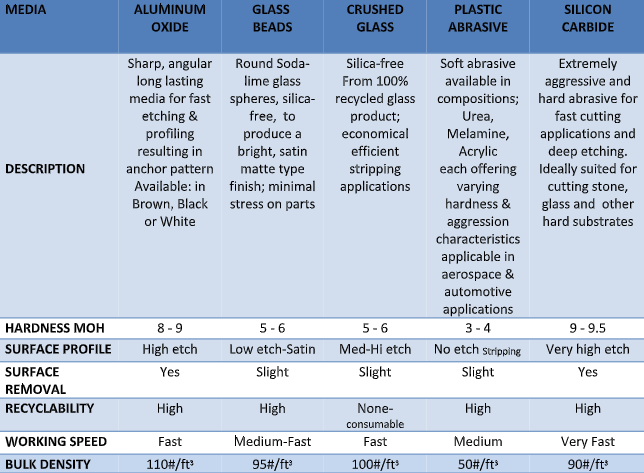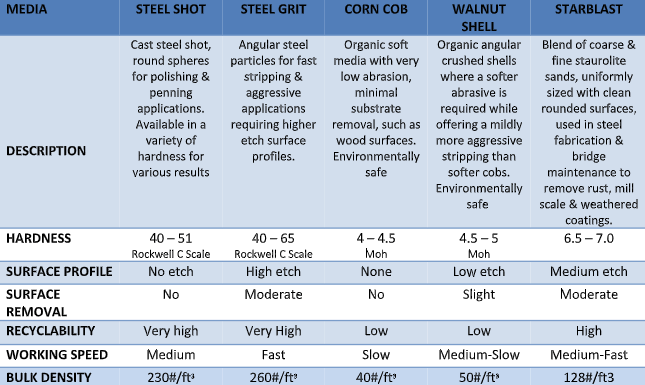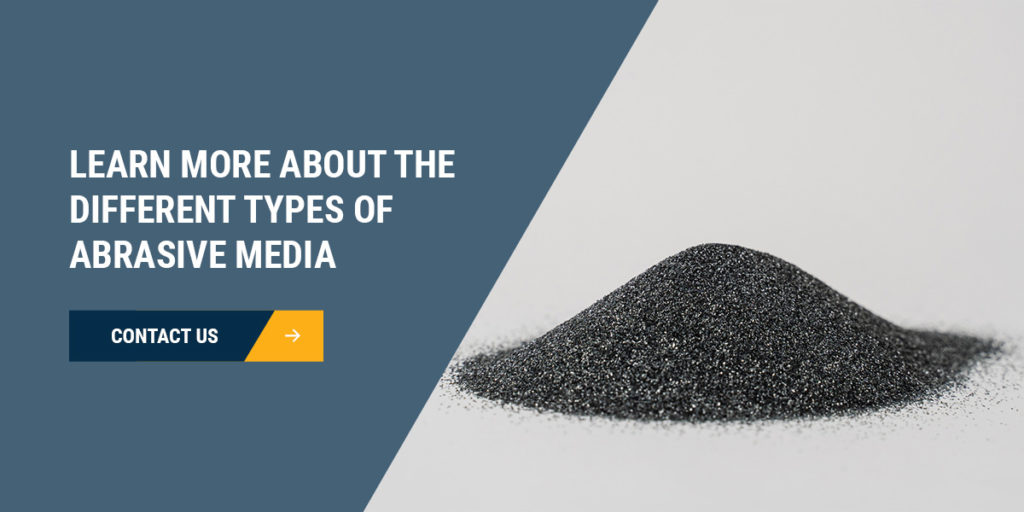Types of Abrasive Materials
March 07, 2023Workpieces made of metal often have impurities or defects that arise either naturally or during the various stages of manufacturing and processing. These imperfections can complicate the application of coatings or hinder critical processes, ultimately affecting the overall quality of the final product.
Abrasive blasting serves as an effective method to eliminate unwanted materials and prepare the surface of the substrate for subsequent production steps. This process involves propelling high-pressure water mixed with abrasives to clean off dirt, grease, chemicals, and other residues, achieving the desired finish.
Multiple types of abrasive materials, commonly referred to as media, are available for this blasting process. Each type presents unique benefits and drawbacks.
What Are the Different Types of Abrasive Media?
Let’s take a closer look at some of the most common abrasive media types, along with a brief description and their typical surface finishing applications:

- Glass Beads: Glass is less aggressive than other materials like steel shot or silicon carbide. It's an excellent option for applications that need a softer, shinier finish, especially for stainless steel surfaces. Glass beads can be recycled numerous times.
- Aluminum Oxide: Known for its superior hardness and strength, aluminum oxide is versatile and can be used in anti-slip surfaces, industrial blasting, and even as a raw material for refractories. It works well on various substrates such as glass, granite, marble, and steel. Its deep etching capability makes it ideal for preparing surfaces before painting or applying coatings.
- Plastics: Plastic abrasive is a dry thermoset cleaning media made from crushed urea, polyester, or acrylic. Each type comes in varying degrees of hardness and particle sizes. Plastic is generally preferred for mold cleaning, blasting plastic parts, or scenarios where removing the substrate material is undesirable. Industries such as automotive, aviation, boating, electronics, and industrial sectors commonly use plastic media blasting.
- Silicon Carbide: As the hardest abrasive blasting material available, silicon carbide is perfect for demanding surface finishing tasks. It is found in various colors and purities. Silicon carbide is widely used in bonded abrasive tools, lapping, polishing, glass etching, and heavy-duty blast cutting applications.

- Steel Shot & Grit: Steel abrasive is a cost-effective alternative due to its toughness and high recyclability. It can be used on various surfaces to remove contaminants, create textures for better adhesion of coatings, or even in peening (hardening) applications. Selecting the right size, hardness, and shape is crucial for proper media selection.
- Starblast: Starblast™ is a mined blend of coarse and fine staurolite sands with very low silica content, making it a great general-purpose blasting abrasive. It’s ideal for removing scale and rust from steel surfaces while maintaining low dust levels for better visibility.
- Walnut Shells: Walnut shell abrasive is a hard natural material made from crushed walnut shells. It's the tougher option among soft abrasives and comes in various sizes for cleaning and polishing softer surfaces without causing damage. Typical uses include polishing soft metals, fiberglass, wood, plastic, and stone. It’s also useful in tumbling operations for polishing gems and jewelry.
- Corn Cobs: Corn cob abrasive is created by crushing the dense woody part of a corn cob into different grit sizes. Being the softer of natural abrasives, it’s perfect for cleaning, deburring, burnishing, and de-flashing applications. Industries such as jewelry, cutlery, engine parts, fiberglass, and graffiti removal from wood, brick, or stone commonly use it.
The Evaluation Criteria
Each of these materials performs differently based on certain characteristics that should be considered when making a selection:
- Hardness: Determined by the Mohs Hardness Scale, which rates materials from 1 to 10. Higher ratings mean the media is more likely to scratch the surface, a key consideration when working with softer substrates.
- Surface Profile: The abrasive's size, shape, hardness, and density contribute to the profile it creates on the material's surface. This can result in no, low, medium, or high etching effects.
- Surface Removal: When choosing an abrasive media, understanding how much of the substrate’s surface the material will remove ensures the outcome aligns with project specifications.
- Recycling: For businesses looking to reduce costs, consider if the material can be recycled and reused after blasting.
- Working Speed: Some materials allow you to complete the blasting process faster than others.
- Bulk Density: The abrasive's density, measured in pounds per cubic foot, influences its cleaning efficiency and the surface profile left on the substrate.
Learn More About the Different Types of Abrasive Media
Finishing Systems offers several types of sandblast media for sale. Many of our products come in various grit sizes and packaging options to suit your company’s specific needs. All these materials provide the consistent quality and performance required to maximize your projects' outcomes.
Need help choosing the right abrasive media? Our team at Finishing Systems has the experience and expertise to guide you through the selection process.
Contact us today for more information or to get answers to your abrasive media questions.

King Whale Machinery Group J.S , https://www.baitextile.com